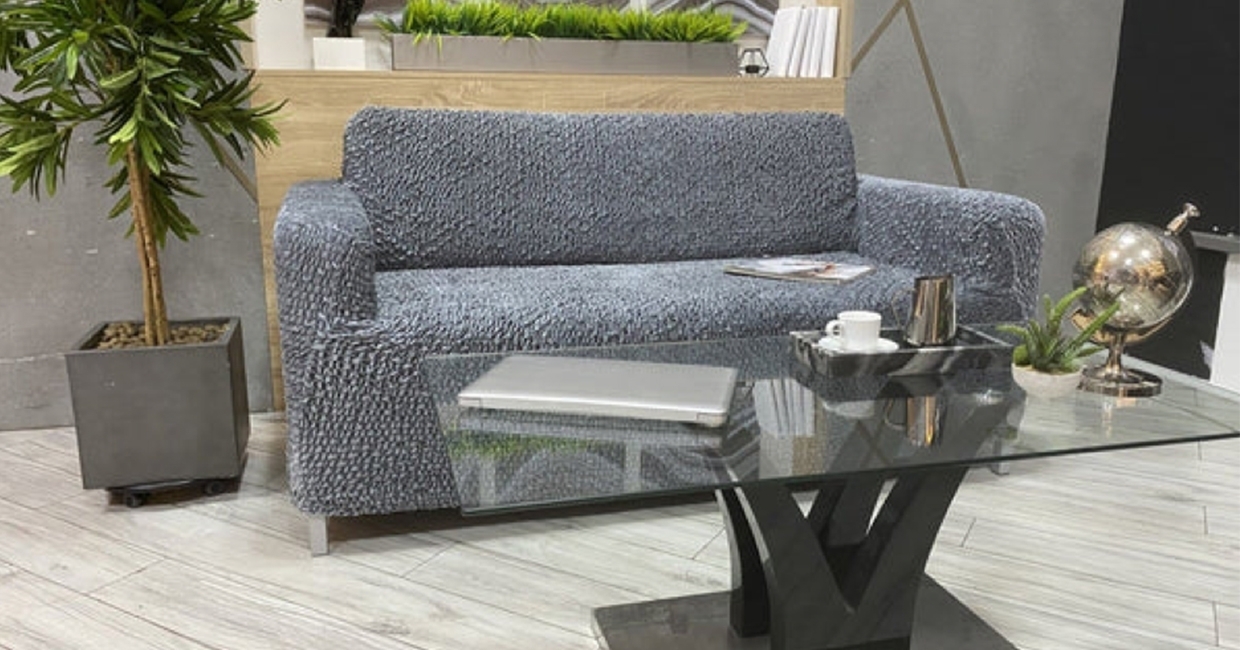Commercial interior design is more than just aesthetic choices – it is about shaping the functionality and atmosphere of workspaces, writes Amy Wilson …
As businesses recognise the importance of creating inviting and comfortable environments for employees and clients alike, furniture innovations, including sofa covers, aim to offer practical solutions blending form with function.
In this article, we'll explore the power of trend-setting furniture, how it shapes the essence of commercial spaces, and the emerging innovations poised to transform the future of workspace design.
The power of trend-setting furniture
Furniture trends have a significant influence on commercial interior design, shaping the way spaces are perceived and experienced by occupants. Beyond aesthetics, trend-setting furniture has the power to enhance the functionality, comfort, and overall appeal of commercial spaces.
One of the key drivers behind furniture trends is the desire to create environments that support the diverse needs and preferences of the present day’s workforce. As businesses embrace flexible work arrangements and diverse workstyles, furniture designers are responding with solutions that prioritise adaptability and versatility.
Furniture trends often reflect broader societal shifts and cultural influences, serving as a reflection of contemporary values and aspirations. For example, the growing emphasis on wellness and mindfulness has led to an increased demand for furniture designs that prioritise comfort, ergonomics and sensory engagement.
By addressing the holistic needs of occupants, cutting-edge office furniture not only enhances physical health but also contributes to a more nurturing and fulfilling work experience, aligning with contemporary values of wellbeing and work-life balance.
Navigating the ever-evolving landscape of commercial design
The field of commercial design is a dynamic and ever-changing realm, driven by a number of factors like technological advancements, cultural shifts, and changing consumer preferences. Several key trends have emerged in recent years which reflect the evolving needs and aspirations of businesses.
The emphasis on flexibility and adaptability has become a prominent trend in commercial furniture design. With the rise of remote work and flexible work arrangements, businesses are seeking furniture solutions that can easily transition between different settings and cater to the diverse needs of modern workspaces.
Modular furniture systems, for example, offer the flexibility to reconfigure spaces quickly and efficiently, allowing organisations to optimise their use of space and accommodate changing work patterns. This kind of trend-setting furniture empowers organisations to optimise their space utilisation and foster a more dynamic and agile work environment.
From height-adjustable desks that accommodate both sitting and standing positions to ergonomic chairs designed to promote better posture and reduce fatigue, innovative furniture solutions can have a transformative impact on the way people work, collaborate and interact within a space.
Another notable trend is the integration of technology into furniture design. From smart desks equipped with wireless charging capabilities to ergonomic chairs with built-in sensors for monitoring posture and activity levels, technology-enabled furniture solutions are revolutionising the way people work and interact within commercial spaces.
These innovations not only enhance comfort and productivity but also contribute to the creation of smarter, more connected workplaces where seamless integration of technology enhances the efficiency and efficacy of work processes.
Sustainability has become an increasingly important consideration in commercial furniture design. As businesses strive to reduce their environmental footprint and adopt more eco-friendly practices, there is a growing demand for furniture made from sustainable materials and manufactured using environmentally responsible processes.
From recycled materials to renewable resources, sustainable furniture options are becoming more readily available, allowing businesses to align their design choices with their sustainability goals.
Embracing change – transforming commercial spaces with trend-setting designs
As the nature of work continues to evolve, so too does the design of commercial spaces. Emerging trends and innovations in commercial furniture design are poised to shape the future of workspace environments, creating dynamic and inspiring settings that support the needs of today's businesses and their occupants.
One emerging trend is the blurring of boundaries between traditional workspaces and collaborative areas. In response to the growing importance of teamwork and collaboration, furniture designers are creating hybrid environments that seamlessly integrate individual workstations with flexible meeting spaces and communal areas.
Adaptable designs that encourage interaction and creativity, while also providing individuals with the flexibility to choose how and where they work, are becoming increasingly popular today.
Another key trend is the incorporation of biophilic design principles into commercial spaces. Inspired by nature and reflecting the shift towards sustainability, biophilic design seeks to create environments with a sense of connection to the natural world, promoting wellbeing and productivity.
In furniture design, this trend is reflected in the use of organic shapes, natural materials and elements that evoke the outdoors. Even going as far as incorporating greenery into the space with living walls and furniture with integrated planters, biophilic design elements bring a sense of vitality and tranquility to commercial spaces.
The rise of remote work and digital collaboration tools has led to a greater emphasis on creating immersive and technology-enabled environments. Virtual reality and augmented reality technologies, for example, are being integrated into commercial furniture design to create interactive and engaging experiences for users.
From virtual meeting rooms to digital whiteboards, these technologies offer new opportunities for collaboration and creativity, allowing businesses to connect with remote teams and clients in meaningful and productive ways.
The emerging trends in commercial furniture design are all about reshaping the way we think about and experience workspace environments, ushering in an era of innovation, adaptability and sustainability.
Furniture trends in commercial spaces
Following trends and embracing innovative design concepts allows businesses to create dynamic and adaptable environments that foster creativity, collaboration and wellbeing, catering to the evolving needs of modern workplaces, and driving positive outcomes for both employees and organisations alike.
Businesses need to maintain environments that are vibrant, adaptable, and conducive to success. As we continue to embrace the transformative potential of trend-setting designs, the future of commercial spaces promises to be as dynamic and inspiring as ever.
Exploring cutting-edge furniture trends in commercial spaces









